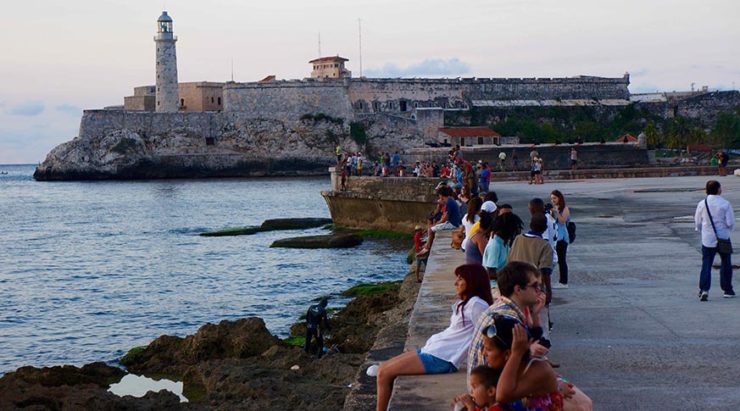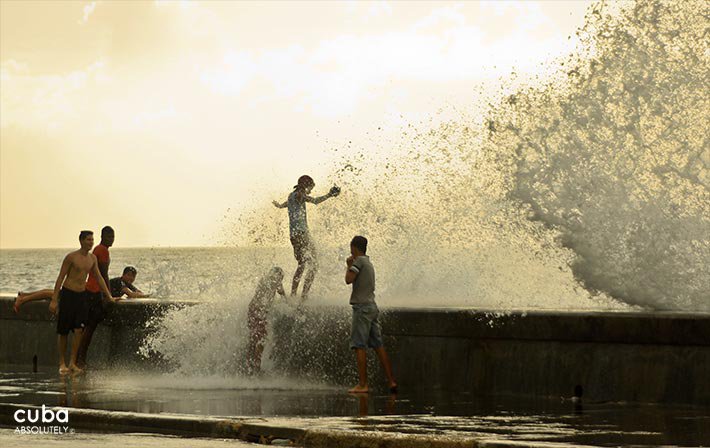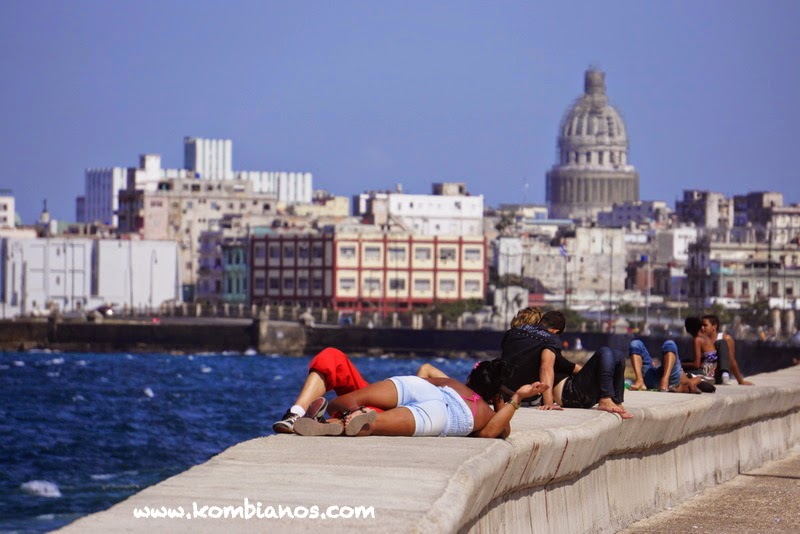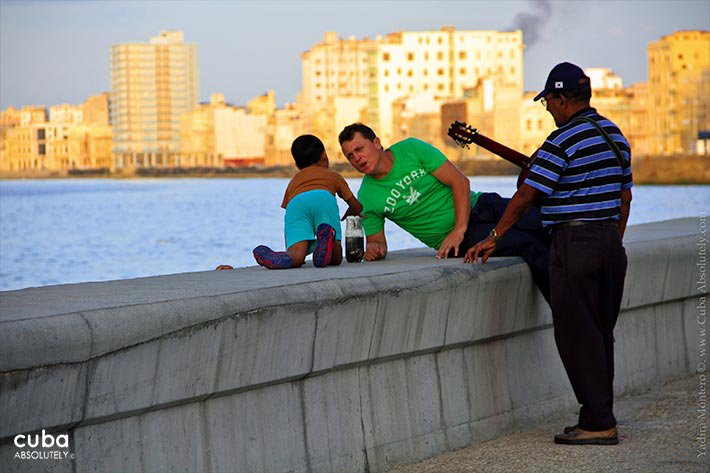 THE HAVANA MALECÓN: A CUBAN OUTDOOR SALON.
THE HAVANA MALECÓN: A CUBAN OUTDOOR SALON.
The Malecón, first called Avenida del Golfo, is the most famous avenue in Cuba. Havana is not conceived without its Malecón, the most cosmopolitan place in the city. So much importance is given, that this generic name and that is synonymous with dike, acquires here a category of its own name and is written with a capital initial letter.
With more than seven kilometers of a wall that runs from east to west and extends between two colonial fortresses: the castle of Punta, at the beginning of Paseo del Prado, and the castillito of La Chorrera, on the edge of the mouth of the Almendares river. On the other side, the old and new city, with some of its best hotels, monuments and parks; on the other side, the open sea, blue, simple, democratic, as defined by our great poet Nicolás Guillén.
A busy avenue borders it from end to end and each of its four sections has a name that identifies it. But for any habanero who respects himself, the waterfront, despite its stretches, has no name but Malecon, the fastest way to connect with Miramar and Marina Hemingway from Old Havana, and which becomes during the Havana carnivals in the biggest dance floor in the world.
The project was carried out by Don Francisco de Albear, the greatest Cuban engineer of the time. Albear devised a complex but intelligent design for the breakwater, which would be much more than a walk. According to historical records, it was assumed that the avenue would be built at 4 meters above sea level.
The construction of the Malecón began in 1901. After the first section was completed, for which several demolished public facilities, the construction works were resumed in 1921 and again in the 30s. The Malecón’s architectural wealth is also expressed in the stately homes of the eighteenth and nineteenth centuries, followed by a row of buildings of the twentieth century with an unusual combination of styles and profusion of porticos, columns and pilasters that follow classic lines. But beyond the architectural values of buildings, its greatest charm lies in being a place to walk or hang out on a stifling day. It is a place where couples come to make peace, especially at dusk, in the company of children and fishermen. It is the outdoor salon of Havana.
Just as Havana is not conceived without this wall and its populous neighboring road, the Malecón is not conceived without its lovers and fishermen. Since more than a hundred years ago that work that embellished the city began to be built, the people of Havana made it the preferred place for the walk. And couples in love, cradled by the sea breeze, went in search of intimacy: an intimacy they get inexplicably, although almost on their side other couples with the same purpose are sitting.
That happens mostly at night. By day, the Malecon is the fishermen’s. It is not known when they began to appear. Maybe they have always been. Those of here are, like all the fishermen of the world, quiet people, of infinite patience, of perseverance and optimism worthy of a better cause and exaggerated as they can not when they allude to their occupation. They arrive with their accoutrements, deploy them and fish! Although sometimes they do not fish or catch only a poor catch after many hours of work under a sun of justice that makes lighted jumpers fall on their heads.
Does not matter. Nothing discourages them. They are a whole lineage. They have lineage and nobility. They are the fishermen of the Malecón, and they will return the next day for more of the same. The funny thing is that most of them are not encouraged by material interest. Only the pleasure to do what they do and then discuss with other fishermen who managed to catch the biggest peje in the world that only existed in his imagination and his desire.
 EL MALECÓN DE LA HABANA: UN SALÓN AL AIRE LIBRE. FOTOS.
EL MALECÓN DE LA HABANA: UN SALÓN AL AIRE LIBRE. FOTOS.
El Malecón, primero llamado Avenida del Golfo, es la avenida marítima más famosa de Cuba. La Habana no se concibe sin su Malecón, el sitio más cosmopolita de la urbe. Tanta importancia se le da, que ese nombre genérico y que es sinónimo de dique, adquiere aquí categoría de nombre propio y se escribe con letra inicial mayúscula.
Con algo más de siete kilómetros de un muro que corre de este a oeste y se extiende entre dos fortalezas coloniales: el castillo de la Punta, al comienzo del Paseo del Prado, y el castillito de La Chorrera, a la vera de la desembocadura del río Almendares. Del lado de acá, la ciudad vieja y nueva, con algunos de sus mejores hoteles, monumentos y parques; del otro lado, el mar abierto, azul, sencillo, democrático, como lo definiera nuestro gran poeta Nicolás Guillén.
Una transitada avenida lo bordea de extremo a extremo y cada uno de sus cuatro tramos tiene un nombre que lo identifica. Pero para cualquier habanero que se respete, la costanera, a pesar de sus tramos, no tiene más nombre que Malecón, el camino más rápido para conectarse con Miramar y la Marina Hemingway desde La Habana Vieja, y que se convierte durante los carnavales habaneros en la pista de baile más grande del mundo.
El proyecto fue llevado a cabo por Don Francisco de Albear, el mayor ingeniero cubano de la época. Albear ideó un diseño complejo pero inteligente para el rompeolas, que sería mucho más que un paseo. Según registros históricos, se suponía que la avenida estaría construida a 4 metros sobre el nivel del mar.
La construcción del Malecón comenzó en 1901. Después de que se completó el primer tramo, para el cual varias instalaciones públicas demolidas, las obras de construcción se reanudaron en 1921 y nuevamente en los años 30. La riqueza arquitectónica del Malecón también se expresa en las casas señoriales de los siglos XVIII y XIX, seguidas por una hilera de edificios del siglo XX con una combinación inusual de estilos y profusión de pórticos, columnas y pilastras que siguen líneas clásicas. Pero más allá de los valores arquitectónicos de los edificios, su mayor encanto radica en ser un lugar para pasear o pasar el rato en un día sofocante. Es un lugar donde las parejas vienen a hacer las paces, especialmente al atardecer, en compañía de niños y pescadores. Es el salón al aire libre de La Habana.
Así como no se concibe La Habana sin ese muro y su populosa vía aledaña, no se concibe el Malecón sin sus enamorados y sus pescadores. Desde que hace más de cien años comenzó a construirse esa obra que embelleció la ciudad, los habaneros lo hicieron lugar de preferencia para el paseo. Y parejas de enamorados, acunadas por la brisa marina, acudieron en busca de intimidad: una intimidad que consiguen inexplicablemente aunque casi a su lado se hallen sentadas otras parejas con idéntico propósito.
Eso ocurre sobre todo en las noches. De día, el Malecón es de los pescadores. No se sabe cuándo empezaron a aparecer. Tal vez hayan estado siempre. Los de aquí son, como todos los pescadores del mundo, gente callada, de paciencia infinita, de una constancia y un optimismo dignos de mejor causa y exagerados a más no poder cuando aluden a su ocupación. Llegan con sus avíos, los despliegan y ¡a pescar! Aunque a veces nada pesquen o cobren solo una pobre captura tras muchas horas de faena bajo un sol de justicia que hace caer barretas encendidas sobre sus cabezas.
No importa. Nada los desanima. Son toda una estirpe. Tienen linaje y nobleza. Son los pescadores del Malecón, y volverán al día siguiente para más de lo mismo. Lo curioso es que a la mayoría de ellos no los alienta el interés material. Solo el gusto por hacer lo que hacen para después comentar con otros pescadores que consiguieron atrapar el peje más grande del mundo que solo existió en su imaginación y en su deseo.
Agencies/HavanaCom/Ciro Bianchi/ Internet Photos/ Arnoldo Varona/ TheCubanHistory.com
THE CUBAN HISTORY, HOLLYWOOD.








